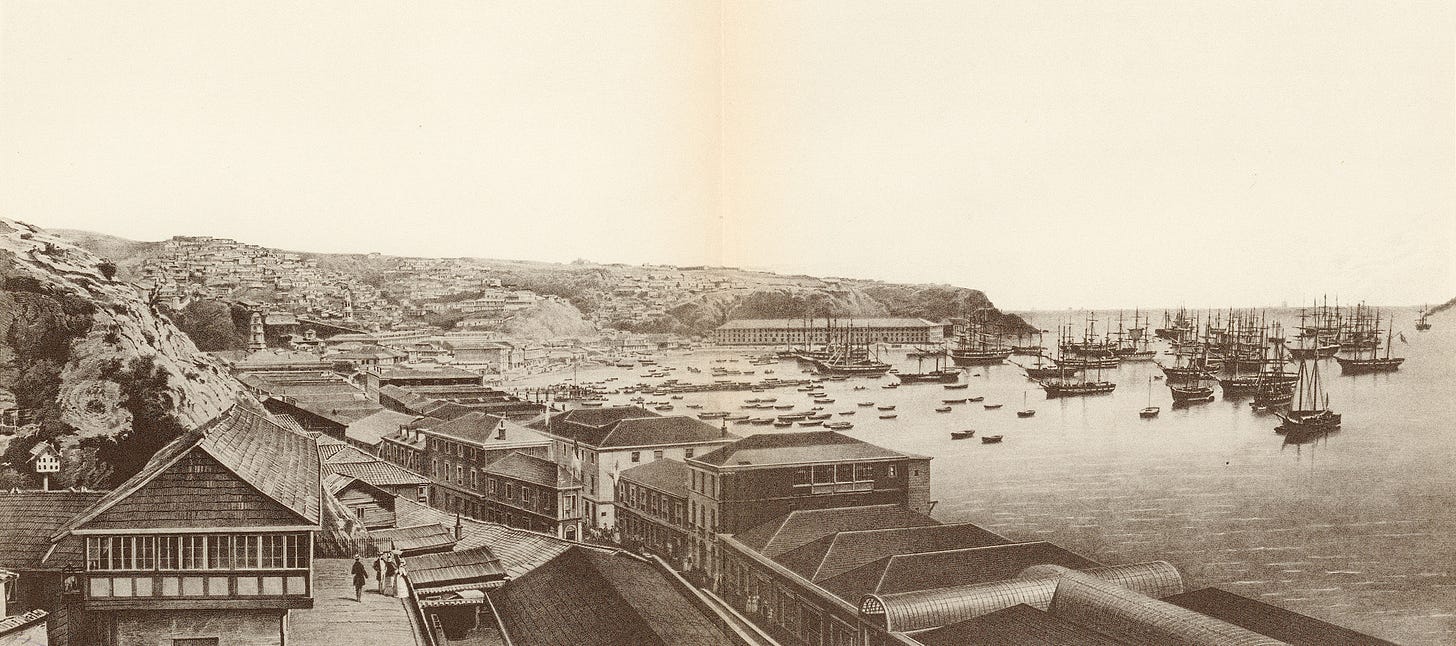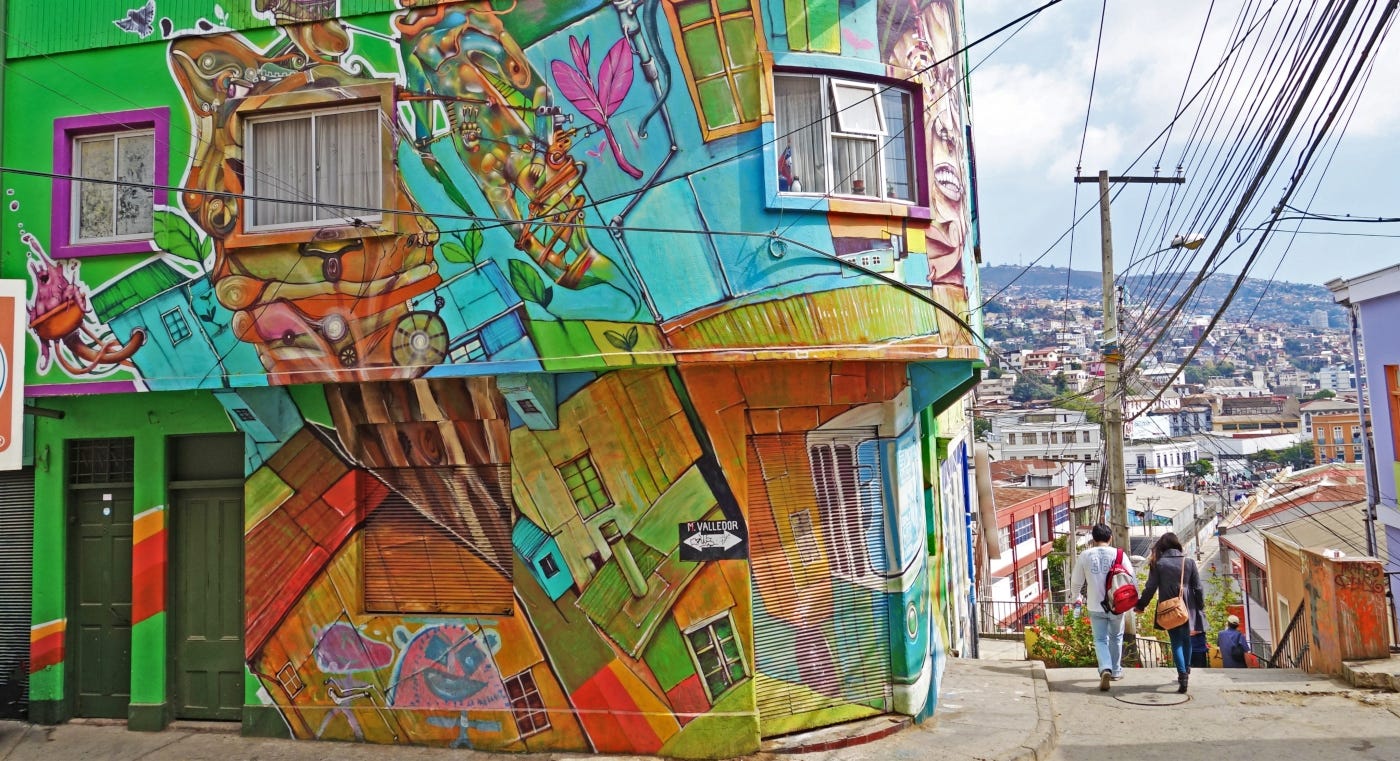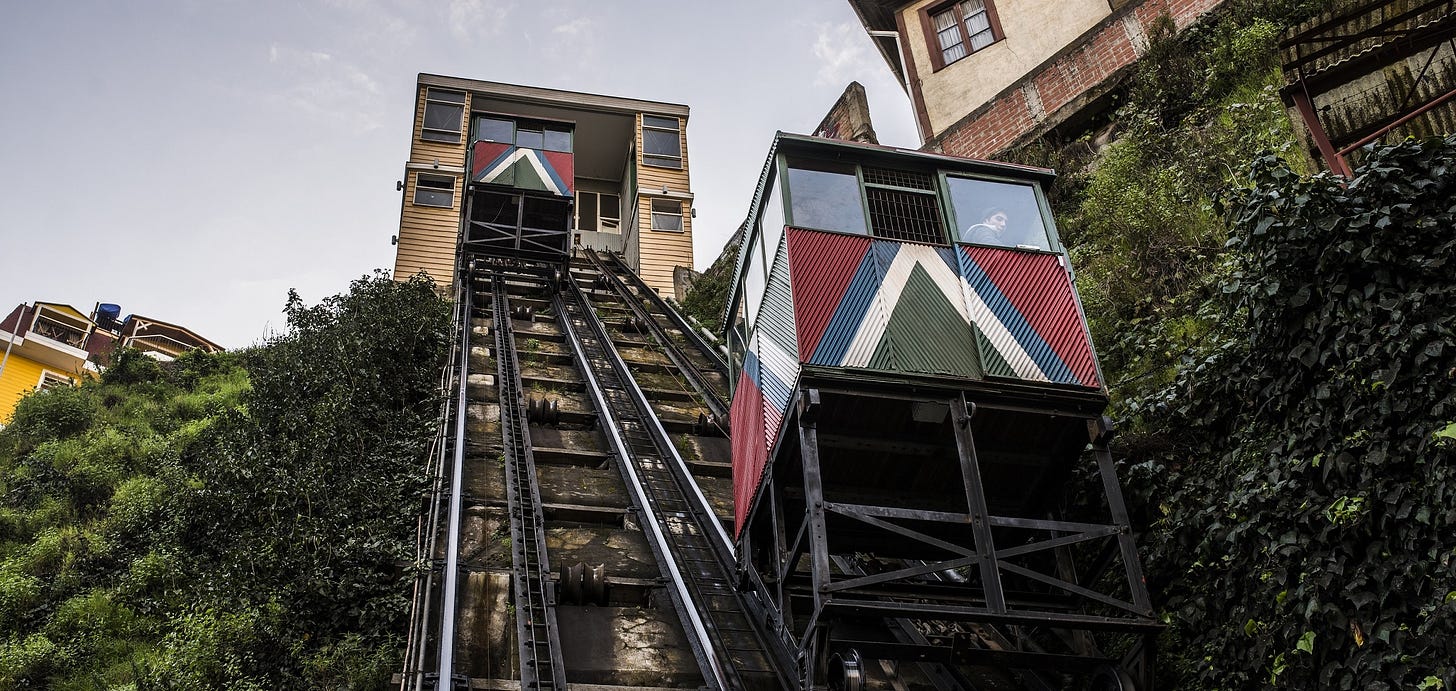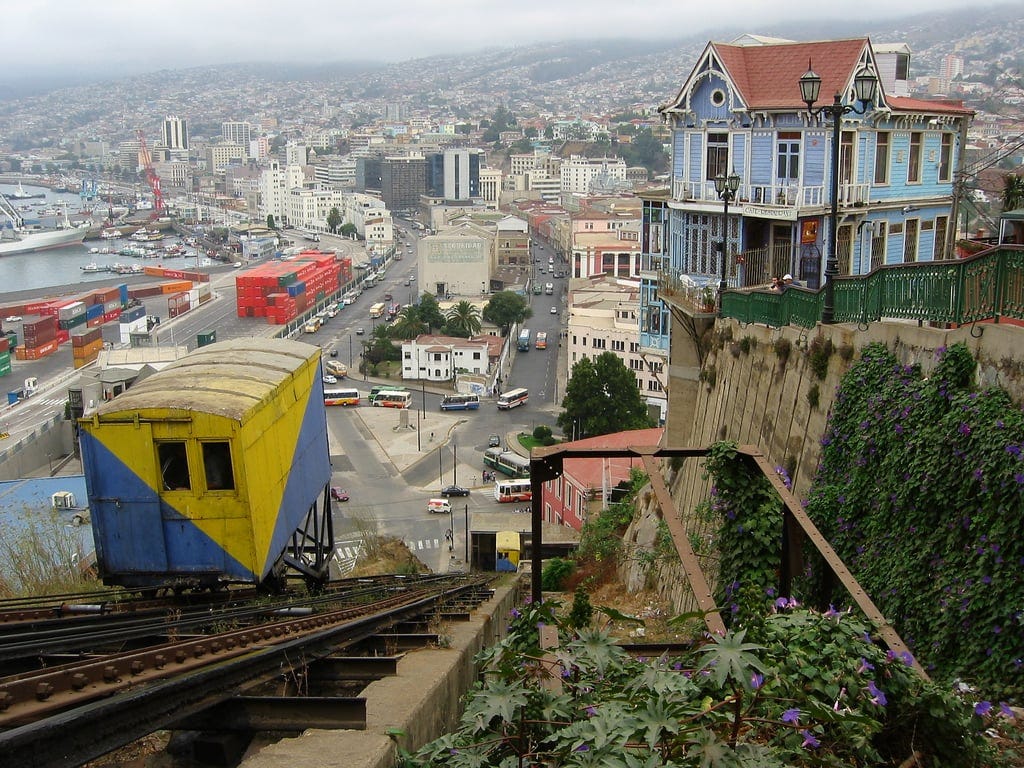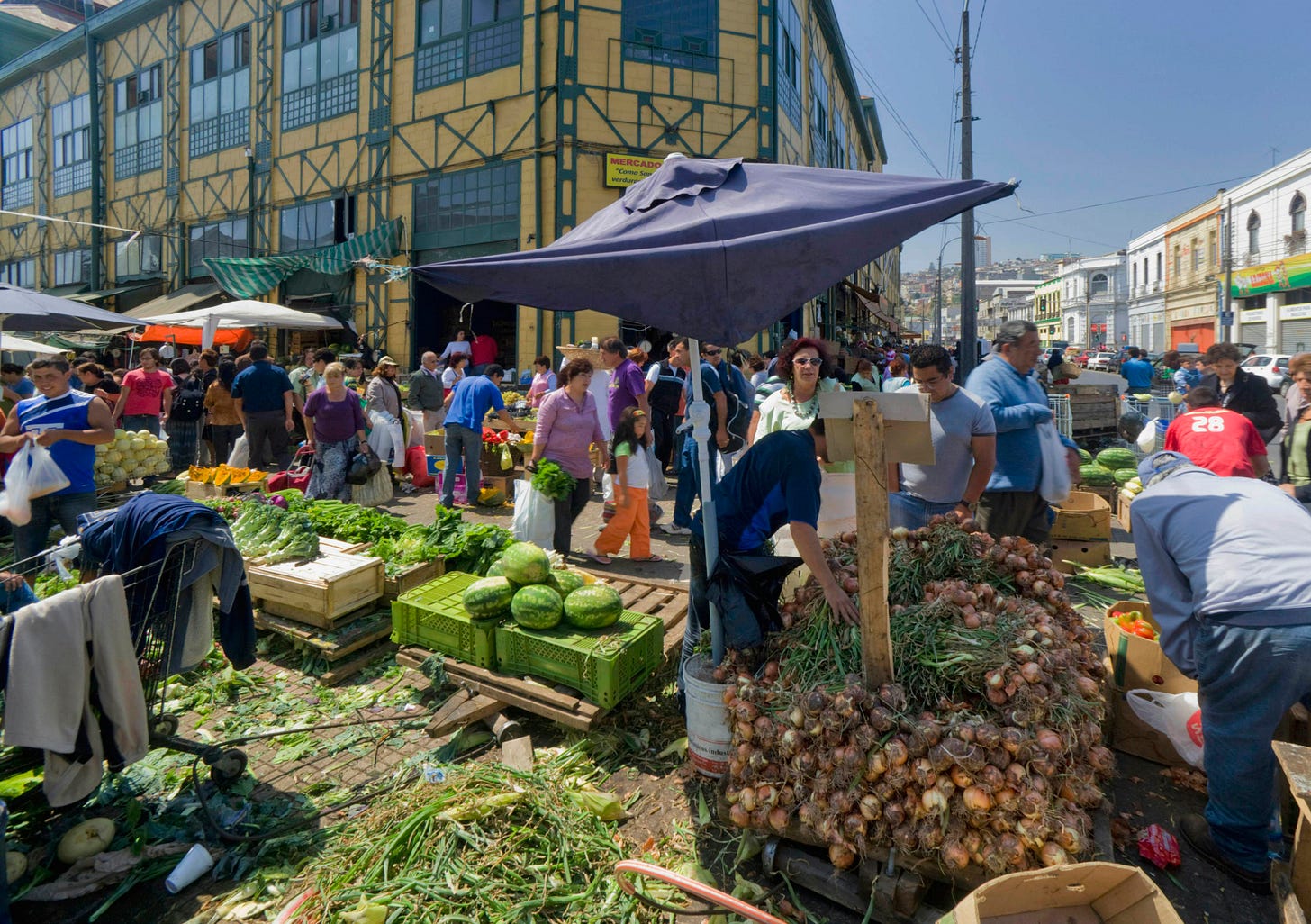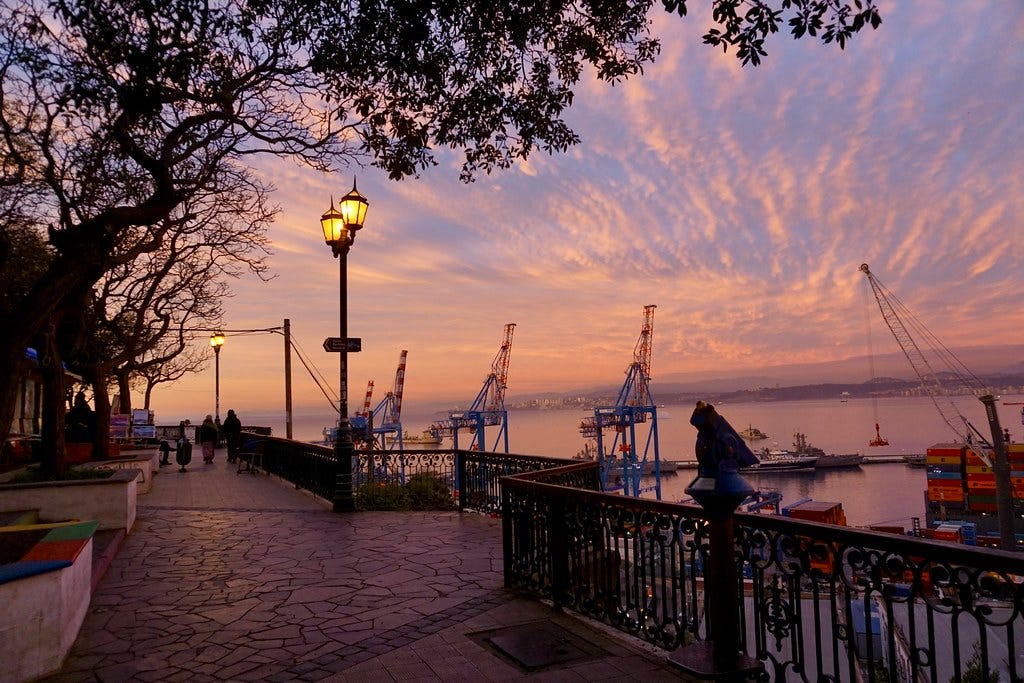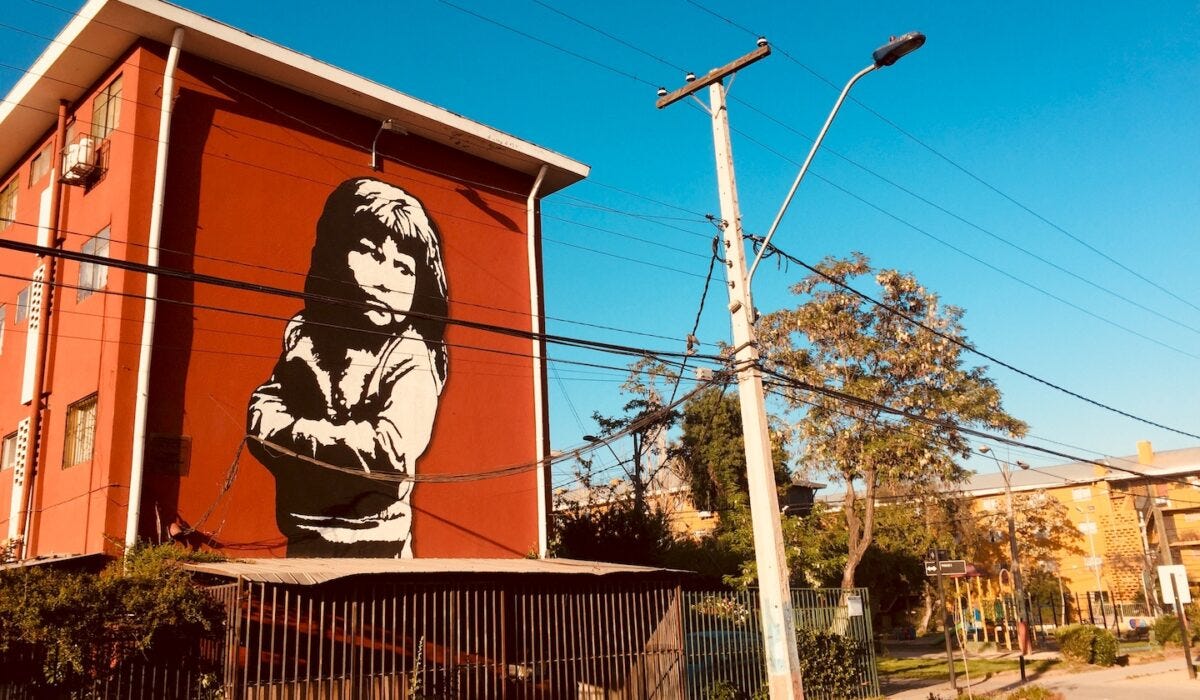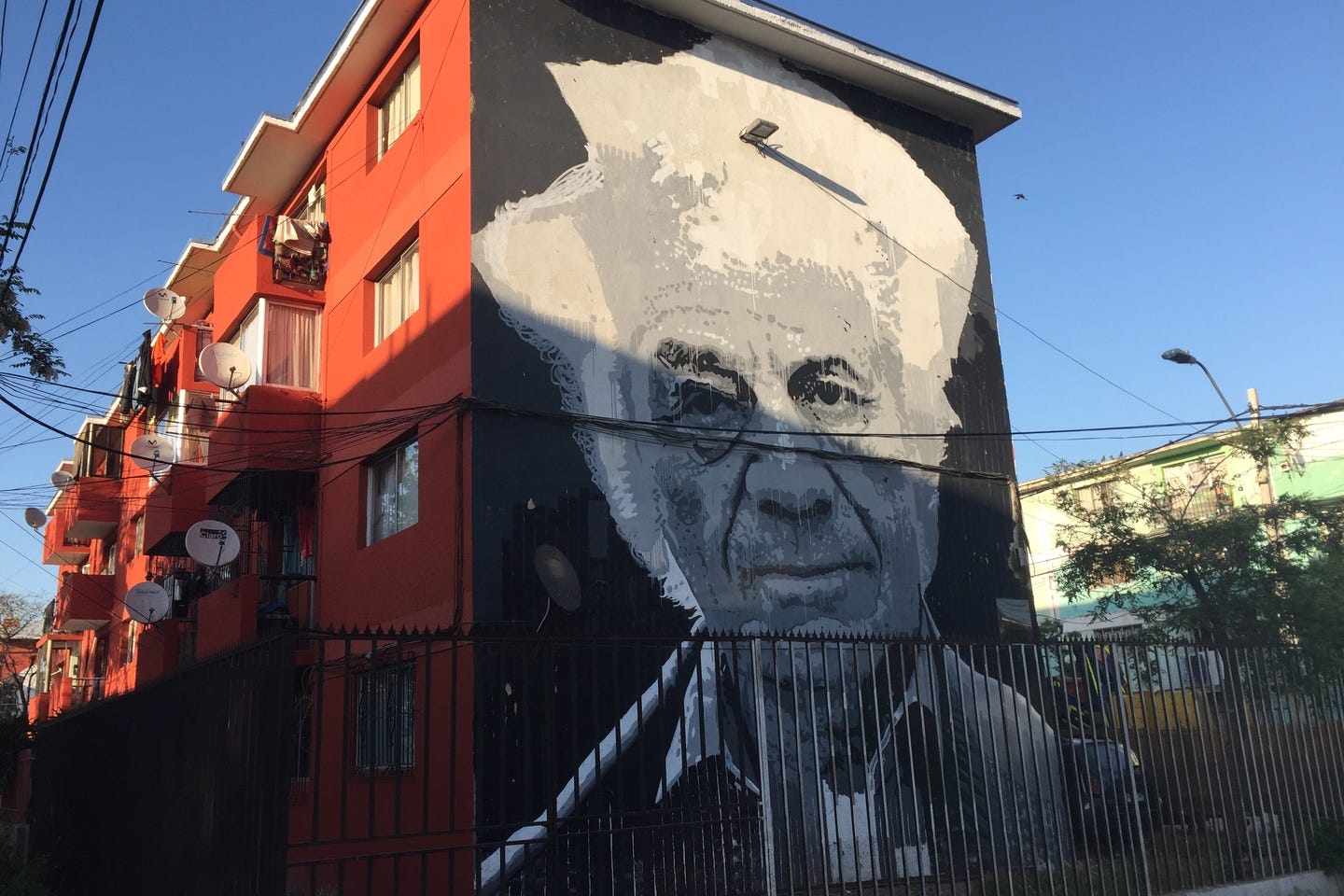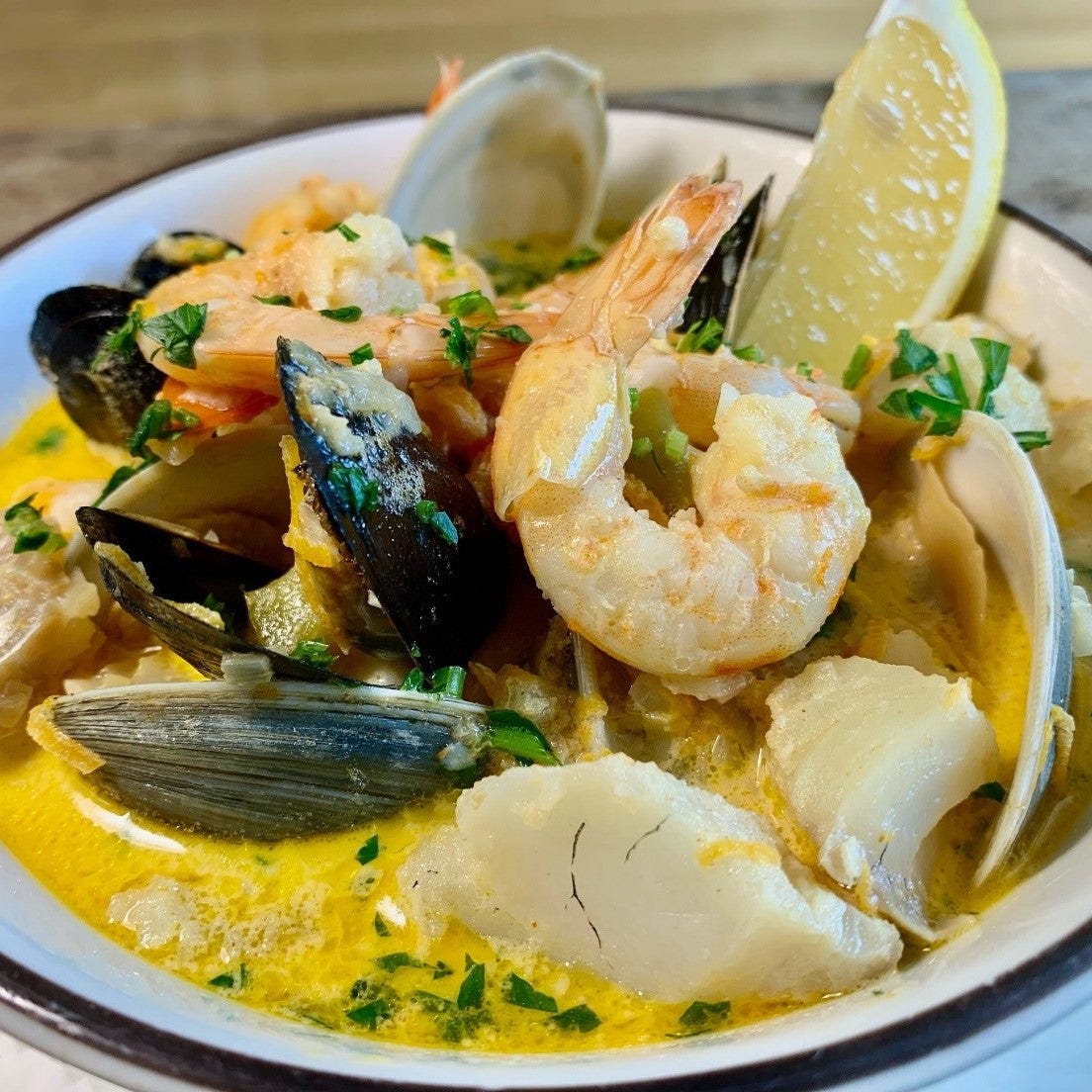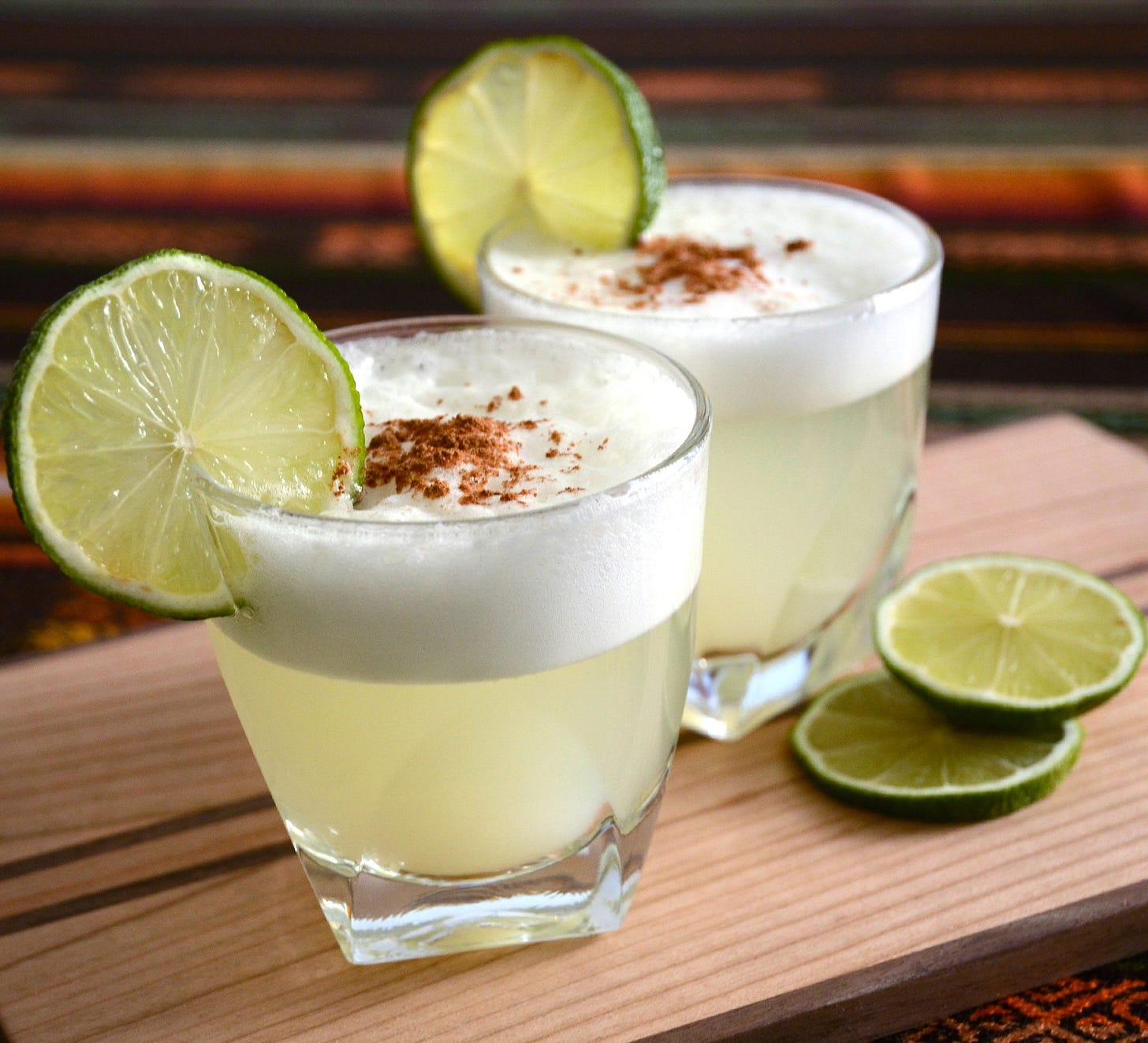Crumbling Mansions and Painted Walls: The Wild Soul of Valparaíso
This Chilean city tells its story one mural at a time.
I first found Valparaíso in this old travel guide I picked up at a used bookstore. The photos were grainy, kind of faded, but there was something about them. Shadows and colors bleeding into each other, like the whole place had been sketched in charcoal and then someone just threw paint over it.
A city clinging to hillsides, staircases winding like veins down to the Pacific. Right then, even just flipping through those pages, I felt like there was something there I needed to understand. Something behind the peeling paint and broken windows that turned it all into art.
A Hook That Dares You In 🎥
Imagine stepping off a rattling funicular into an amphitheater of crumbling Victorian mansions, their ornate gables dipping toward the sea breeze. The air carries the tang of ocean salt and sizzling street food. Above you, walls burst with gargantuan murals of ghostly sailors, dreaming poets, and technicolor whales. This is Valparaíso, Chile’s bohemian heart, where decay and reinvention dance in perfect chaos.
Why Valparaíso Captured My Heart

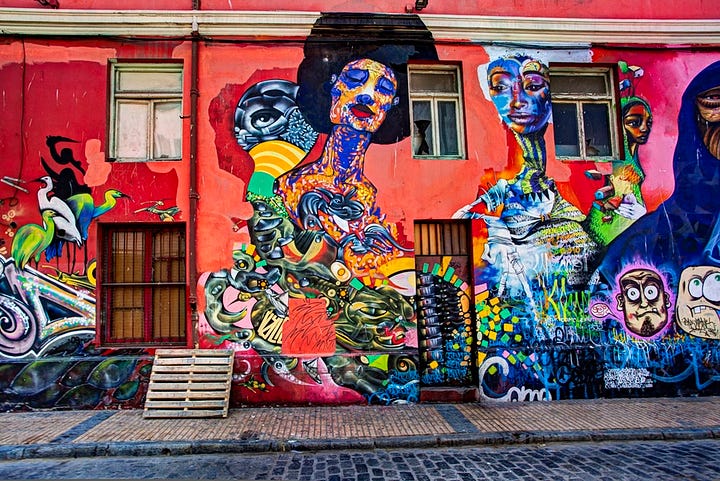
Valparaíso feels intimate, like an old friend whose every wrinkle tells a story. I first connected with the city through Pablo Neruda’s poems, which celebrate its beauty and melancholy as a place shaped by the sea and steep hills. Later, I read stories online from backpackers about quiet alleyway cafés, late-night music under streetlights, and a busy port that keeps going long after dark. Even from far away, the city’s energy will draw you in.
History in Layers: From Silver Ships to Street Art
Valparaíso was founded in 1536 and grew to be Chile’s main port during the 1800s gold rush. Ships arrived loaded with silver from Peru, and the city boomed. Wealthy people built grand Victorian houses on the hillsides, using money made from Pacific trade. But when the Panama Canal opened in 1914, Valparaíso’s golden years ended. The docks grew quiet, and many of the old homes started falling apart.
In the 1990s, graffiti artists and poets began to bring new life to the city’s worn buildings. What started as secret spray-painting soon grew into a full movement. Murals appeared overnight, covering old walls in bright, colorful designs. Today, over 60 neighborhoods have their own unique street art. Around every corner, you’ll see a bearded thinker on a stairwell, a dancing skeleton on a roof, or a school of koi fish climbing the stairs. These murals tell stories of Valparaíso’s past, present, and uncertain future.
Walking the Hills: A Sensory Journey
Imagine waking up before dawn to take the Ascensor Reina Victoria up Cerro Concepción. The rusty lift creaks like an old sailor pulling up a heavy rope. At the top, you can enjoy a small coffee at Café Turri while the morning sun lights up the harbor below. The air smells like fresh empanadas with crisp, buttery crusts hiding warm cheese and smoky pork inside.
As the day fully breaks, you’ll get lost in the maze of Pasaje Kunstmann, a narrow alley lined with potted plants and paper lanterns. Every step echoes with the sound of footsteps and laughter against the tile and old wood. You should then stop at a street food stall for a chorillana, a dish of slippery fries covered with beef, onions, and a fried egg, with hot grease dripping down your fingers. The flavors are bold, with notes of salt, sweetness, and richness, just like the city itself.
What to Do: Embrace the Port City’s Rhythms
Start by riding one of the city’s famous funiculars. There used to be more than 30, but now only about a dozen still carry passengers up and down Valparaíso’s steep hills. Each one is like a ride into a new part of the city. They creak and groan as they climb, showing off postcard views of the Pacific and revealing quiet plazas hidden behind ivy-covered walls. At the top, narrow alleys lead to bright surprises such as murals on staircases, balconies filled with flowers, and tiny cafés where artists and poets sip espresso.
To really get to know the heart of the city, take a local street art tour. The guides are part historian, part storyteller, and part translator of the messages painted on the walls. They’ll take you through alleys that even many locals don’t notice, guiding you to places where the murals aren’t just for decoration but are full of meaning, protest, and memory. You’ll learn the stories behind the faces, the symbols in the paint, and the artists who took big risks to share their voices through color.

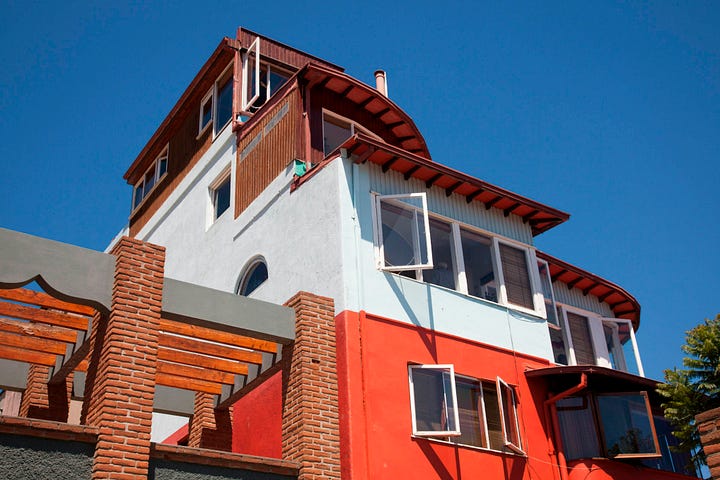
Make time to explore La Sebastiana, Pablo Neruda’s cliff-top sanctuary that now functions as a museum. It’s a house built like a poem, with five eccentric stories stacked like a ship’s cabin and filled with maritime maps, quirky trinkets, and even original Salvador Dalí sketches. Through its large windows, the city unfurls below like an abstract painting with hills rolling into rooftops, rooftops spilling into docks, and docks stretching to the restless sea.
At the bottom of the city, explore Mercado El Cardonal, a busy port market where locals buy fresh seafood and chat over mote con huesillo, a cold, sweet drink made from wheat and peaches that tastes like summer in a glass. Stalls are filled with anchovies in spicy sauce, grilled oysters fresh from the Pacific, and handmade empanadas with buttery crusts and hot, melted fillings.
When the day starts to fade, head to Paseo 21 de Mayo. This lookout over the harbor fills up every evening with locals, musicians, street vendors, and travelers—all gathering to watch the sun sink below the horizon. As the sky turns pink and orange, the smell of mussels grilling on open flames fills the air. Below, old cargo ships move slowly in and out of the port, like quiet giants in the evening light. It’s here, in the calm of dusk, that Valparaíso’s pace slows just enough for you to relax and feel its magic.
A Hidden Gem: Museo a Cielo Abierto
Beneath the busy Mirador Artillería is the Museo a Cielo Abierto, or “Open-Air Museum.” In 1992, twenty artists were asked to paint ten blocks of plain concrete walls in the Cerro Bellavista neighborhood.
Today, around every corner, you’ll find surprises: a colorful snake weaving through bright pink flowers, children’s shapes shining in gold, and a quiet calm broken only by seagulls flying overhead. It’s a spot off the usual path, but here you can see Valparaíso’s spirit clearly, with each broken wall showing how art can heal and bring new life.
Savoring Valparaíso: Notable Cuisine Worth Traveling For
In Valparaíso, the food is as bold and unpretentious as the city itself—flavors forged by the sea, the hills, and the generations who’ve called them home. Start with cazuela de mariscos, a steaming seafood broth that arrives at your table still breathing with heat. Clams, mussels, crab, and flaky white fish swim in a golden, aromatic stock laced with herbs and garlic. It’s not just a dish. It’s a warm embrace after a wind-whipped walk along the waterfront.
No visit is complete without biting into an empanada de pino, Chile’s iconic savory turnover. The dough is flaky and golden, the inside packed with spiced beef, slow-cooked onions, briny olives, and just a hint of sweetness from plump raisins. Somewhere in the corner of each one, you’ll find a surprise. A wedge of hard-boiled egg still warm, tucked in like a secret meant only for you.
If you’ve spent your day scaling staircases and weaving through mural-filled alleys, reward yourself with pastel de choclo. This corn casserole is a masterpiece of comfort. It is layered with ground beef, shredded chicken, and raisins, then topped with a thick crust of sweetcorn purée that crisps at the edges and melts in the center. It’s rustic, rich, and the kind of dish that makes you feel like you’ve been invited into someone’s family kitchen.
To drink, start classic with a Pisco Sour, which is Chile’s beloved national cocktail. Pisco brandy is shaken with lime, sugar, and egg white until it’s frothy and smooth, like the breeze rolling off the Pacific. But if you’re feeling adventurous, dare to try a terremoto, which literally means “earthquake.” This potent concoction of pipeño wine, pineapple ice cream, and a dash of Fernet is deceptively sweet at first sip and entirely chaotic by the second. Just one, and you’ll understand how it earned its name.
In Valparaíso, food doesn’t just nourish, it narrates. Every dish tells a story of migration, adaptation, and pride, seasoned with the grit and soul of a city that’s never stopped reinventing itself.
Why Valparaíso Matters
Even from afar, Valparaíso feels like a metaphor for resilience. Its decaying mansions, once symbols of unbridled wealth, now stand side by side with murals that shout hope and defiance. Here, artists have reanimated crumbling walls, poets have recorded the clamor of the port, and everyday residents have woven tradition and creativity into daily life.
Imagine walking the darkened streets at night, the hum of street musicians drifting from an open door, the smell of sea salt lingering on my skin. Imagine finding a rooftop bar where locals toast the city’s contradictions as beauty lives in decay, chaos settles into order, and history is written in spray paint.
Valparaíso reminds us that no city is static. Its character emerges in the cracks, in the peeling paint, and in the bold strokes of its murals. It beckons travelers not simply to observe, but to join the story. To trace a mural’s curve, to taste a dish that’s existed for generations, and to climb another funicular to see the sea once more.
A Call to Explore
If you seek a destination that’s more than polished boulevards and cookie-cutter skyline views, let Valparaíso be your next pilgrimage. Come for the wild soul, and stay for the people who animate it. Brave its steep hills, lend your heartbeat to its rhythms, and add your own stories to its painted walls. Valparaíso awaits, ready to whisper its next mural into your memory.
Pack a sturdy pair of shoes, an appetite for bold flavors, and a mind open to surprises. The city of crumbling mansions and painted walls is ready to reveal its wild heart, layer by glorious layer.






